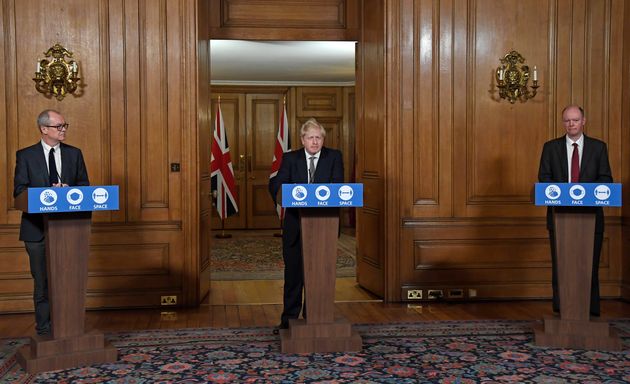England’s chief scientific adviser has been warned by the UK’s statistics watchdog that the way the government is using data to justify coronavirus restrictions lacks transparency and risks undermining public confidence.
Sir Patrick Vallance was warned by the UK Statistics Authority (UKSA) that a failure to provide data underlying slides shown in Downing Street briefings “in a timely manner” has “the potential to confuse the public”.
The watchdog pinpointed graphs and visualisations shown in Saturday’s No.10 press briefing, during which Boris Johnson announced a four-week lockdown for England, flanked by Vallance and England’s chief medical officer Chris Whitty.
In a blog post, UKSA said the government was right to publish the data underlying the slides used in the press conference but pointedly noted that this came three days later.
It also criticised the government’s failure to provide the data and assumptions underlying the prime minister’s claim that “the virus is spreading even faster than the reasonable worst case scenario of our scientific advisers”.
The UKSA also criticised Johnson for seeking to justify the lockdown by warning that the NHS could be overrun with Covid patients, while the government fails to routinely publish statistics on hospital capacity in England, as happens in Wales and Northern Ireland.
In an accompanying letter to Vallance, UKSA director general for regulation Ed Humpherson said: “The use of data has not always been supported by transparent information being provided in a timely manner.
“As a result, there is potential to confuse the public and undermine confidence in the statistics.”

Humpherson also urged the government to publish the data that underlie slides used in press briefings at the same time as the slides are shown.
Where models are used to justify policy, the outputs, methodologies and key assumptions should also be published at the same time, he said.
When key decisions are justified by a reference to statistics, the underlying data should be made available, Humpherson added.
“I know that you take these principles very seriously and welcome your support in encouraging adherence to them,” Humpherson told Vallance.
In the blog post, the watchdog also criticised Welsh first minister Mark Drakeford for publishing slides shown in his October 23 press conference, where he announced a so-called “firebreak” lockdown, while failing to give the public easy access to the underlying data.
Responding, Johnson defended the government’s use of data.
He told the Downing Street press conference: “We try to make things as clear as we possibly can.”
Johnson acknowledged that the “projections vary widely” and there was also a “political judgement” to be made, taking into account the economic consequences.
“It’s very, very tough to make exactly the right call,” he said.
Johnson said some of the facts were “irrefutable”, such as the number of deaths and people in hospital.
“I can’t quarrel with those data, we have to act on those data and collectively, that’s what we’re going to do,” he said.